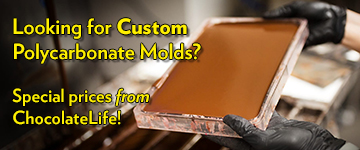There have been a number of studies on the transition from Form V to Form VI, or Beta 5 to Beta 6 (they are identical, just two different naming conventions in the literature) that have been interesting. Two that I like are found here (I am not using standard referencing):
Relation of fat bloom in chocolate to polymorphic transition of cocoa butter - http://link.springer.com/article/10.1007/s11746-998-0101-0
and
Fat Bloom and Chocolate Structure Studied by Mercury Porosimetry - http://onlinelibrary.wiley.com/doi/10.1111/j.1365-2621.1997.tb15455.x/abstract
The first (written in 1998) goes over the different views of what causes fat bloom in the transition from V to VI. Two elements I found interesting - tempered chocolate stored at 5 degrees C showed no elements of bloom in long term storage, and there was a direct correlation of fat bloom formation to storage in conditions of alternating temperatures (not necessary just hotter).
The second (written in 2006) concludes that even well tempered chocolate is porous - with a weak correlation between the percentage of cocoa butter present with the "empty space" present in the tempered chocolate.
In combination, this would tend to indicate that fat bloom forms when some low-melting point oils within the tempered chocolate structure slowly migrate, helped by the structure alternately heating and cooling, to the surface of the well-tempered chocolate as the chocolate becomes denser (tighter packed triglyceride structures) over time in storage. There are of course variations in bloom formation mentioned in the studies due to changes in humidity and the like, but that is a problem I rarely have being in the desert. From a practical standpoint, I am exploring the effects of storage at 5 degrees C for my ganaches to see how long and if they maintain an acceptable mouth-feel when brought back to room temp.
In regard to tempering with Beta 6, given the above there should be no theoretical difference in final result than using the 5 - the Beta 6 has the same basic structure, just (simplistically) more densely packed (and you do not get Beta 6 crystals in chocolate when tempering with Beta 6 crystals - you get 5). The heat of your melted chocolate, even at 35 degrees C, is going to impart enough energy to the Beta 6 to bring it back to Beta 5.
I also do use Mycryo extensively. I prefer using standard seeding, but if I have a relatively full vat I will use a little standard seed to drop the temperature a bit more quickly, then finish it off with Mycryo. I have found in practice that I get a great end result in any of the three variations: 100% tempered chocolate as seed, part tempered chocolate and part Mycryo, and all Mycryo as the seeding element. The chocolate does seem to thicken faster, however, limiting production times, when using the Mycryo instead of tempered chocolate as the seed at equivalent temperatures.


